TESSERAE (ancient lead tokens)

Elsewhere on this site I have written about the lead tokens issued by local communities between the 13th and 19th centuries. They are not, however, exclusive either to that period or to this country. They existed in large numbers in ancient times, in various parts of the Mediterranean, but particularly in and around Rome. Such pieces are generically known as tesserae, meaning “tile”; from which some confusion can result, in that the small rectangular components of mosaics, found on the floors of Roman villas, are similarly designated.

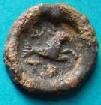
The same classification system which I have proposed for modern crude leads will suffice for Roman, notwithstanding that the older series has a significantly different distribution of subject matter. A very large number of Roman leads are coin-like in design, with heads, busts or full figures in conjunction with abbreviations or initials; i.e. their quality of design is far greater, indicating that they almost certainly had some semi-official status not enjoyed by their later English counterparts. There is also a much greater profusion of birds, animals and plants in the subject matter, plus more frequent use of personal names as opposed to mere initials; balanced against which it is almost unheard of to find a miscellaneous doodle intended to serve as a personal mark. Finally, one of the most noticeable observations is that only some 15% of pieces are uniface, compared with an estimated 57% for their English 18th century counterparts.
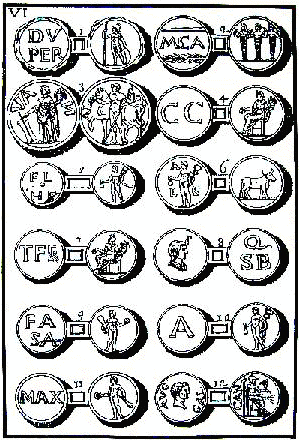
The traditional classicist will feel very much at home with the subject matter on these pieces, and it is therefore a great surprise that more interest has not been shown in them; one of the results of which is that very little has been written about the series, and such as has has not often been in English. One early work, Ficorini’s “De Plumbeis Antiquorum Numismatibus”, illustrates profusely {see inset}, but there must be some doubt as to whether in 1750 his emphasis was on faithfully recording history or on elaborating to fascinate his patrons; suffice it to say, that some of his material is quite amusing!
It would appear that where such pieces are referred to in ancient Roman texts, albeit rarely, the word “quadrans” almost invariably appears; like the farthing, the lowest of the low in conventional currency. There were four quadrans to the as, just as we until recently had four farthings to the penny; therefore, where they are used as money, they may be thought of similarly. Not surprisingly, one of the commonest sizes of tesserae corresponds almost exactly with the 13-14mm diameter of the official quadrans. {Note: The illustrations in this article have been deliberately magnified for greater emphasis, but are mostly 13-14mm}.
M. Rostovtsev, writing in his “Tesserarum Urbis Romae et Surburbi” {St.Petersburg, 1903}, hints in his index at possible uses. A number of them are not dissimilar to our own British paranumismatic usage within the last 200 years; others are similar in spirit, but reflect in detail the differing habits of the day:
- Entertainment {theatre, circus, games, hunting, baths}
- Commemoration of public occasions
- Distribution of corn and grain
- Inns and lodging houses
- Transportation of merchandise
- Chemists and druggists
- Municipal issues by minor officials
- Fishing
- Oxen and cattle
- Guilds
- Manufactured goods
- Prostitution
- Maritime commerce
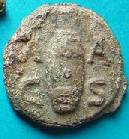
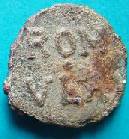
A large number of pieces which bears the heads, names or initials of people now unknown, and may well be the equivalent of our local traders’ pieces; others will be passes, granting some entitlement now lost in history. Some pieces do show the names and features of identifiable emperors, but so in abundance do our modern 19th century unofficial farthings. Less familiar to the modern era are the tesserae relating to such groups as:
- Foreign races
- Gods, goddesses and heroes
- Wreaths, palms, garlands and other symbols of honour.
- Personifications
- The army
However, it is precisely in these areas that the unofficial tesserae most nearly touch the official imperial coinage of the day. Neither also is there too much unfamiliar in this extract from the same author’s “Social and Economic History of the Roman Empire”{Oxford, 1926}:
“The dearth of coined money of small denominations produced some interesting results which testify to a powerful development of economic life, the claims of which were but slowly and incompletely met by the state. In the reigns of Claudius and Nero, after the suppression of the local Gallic and Spanish coinages, numerous imitations of the copper coins minted at Rome appeared in the Western provinces, including the Rhine lands and Britain, and these imitations were tolerated by the Government. Moreover, in almost all the large and even in some of the small cities of the Empire the retail traders, barmen, innkeepers, owners of ferries and passenger boats etc, issued their own money in the form of tokens and jetons. Great quantities of these tesserae, mostly of lead, have been found in the Tiber at Rome, some in Aquileia, some in Ostia, in Smyrna and elsewhere. It is possible that in some ports even the cities made regular issues of such tokens.”
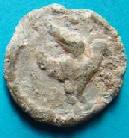
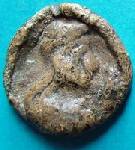
Two Roman pieces found at Colchester.
Useful References and Links:
F.Ficorini: “De Plumbeis Antiquorum Numismatibus” {Rome, 1750}
Translates: “Ancient Lead Money”
M.Rostovtsev: “Tesserarum Urbis Romae et Surburbi” {St.Petersburg, 1903}
Translates: “Lead Tokens of the City of Rome and its Suburbs”
M.Rostovtsev: “The Social and Economic History of the Roman Empire” {Oxford, 1926}
M.Overbeck: “Römische Bleimarken in der Staatlichen Münzsammlung München. Eine Quelle zur Sozial- und Wirtschaftgeschichte Roms” {Munich, 1995}
Translates: “Catalogues of Lead Tokens in the State Museum of Munich”
David Powell
December 2006
